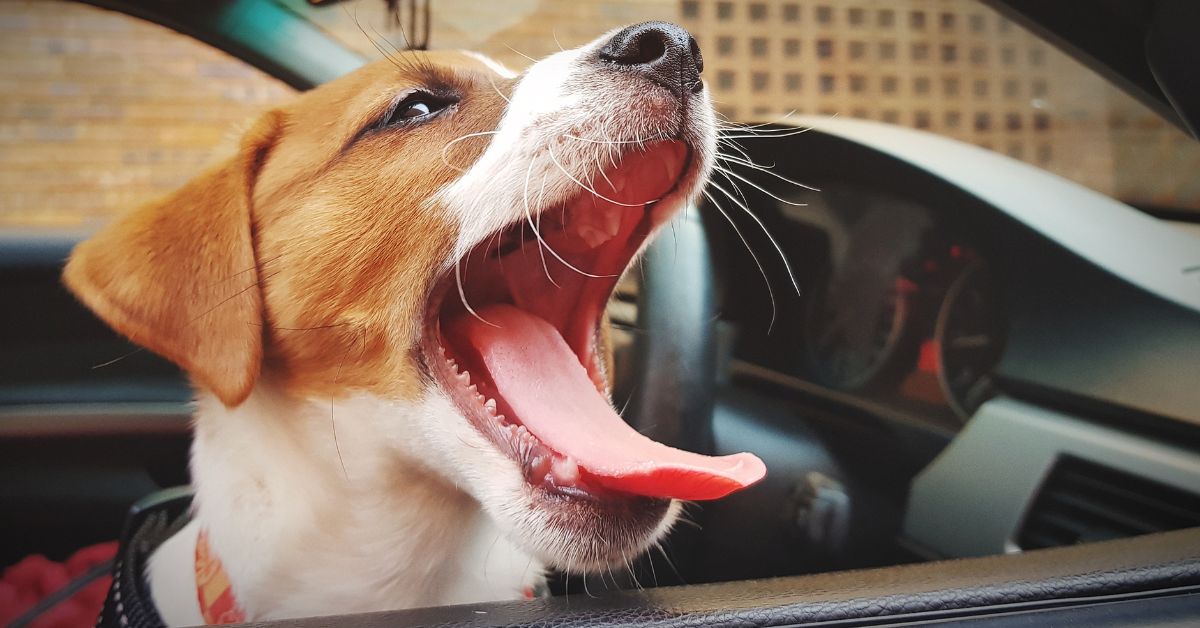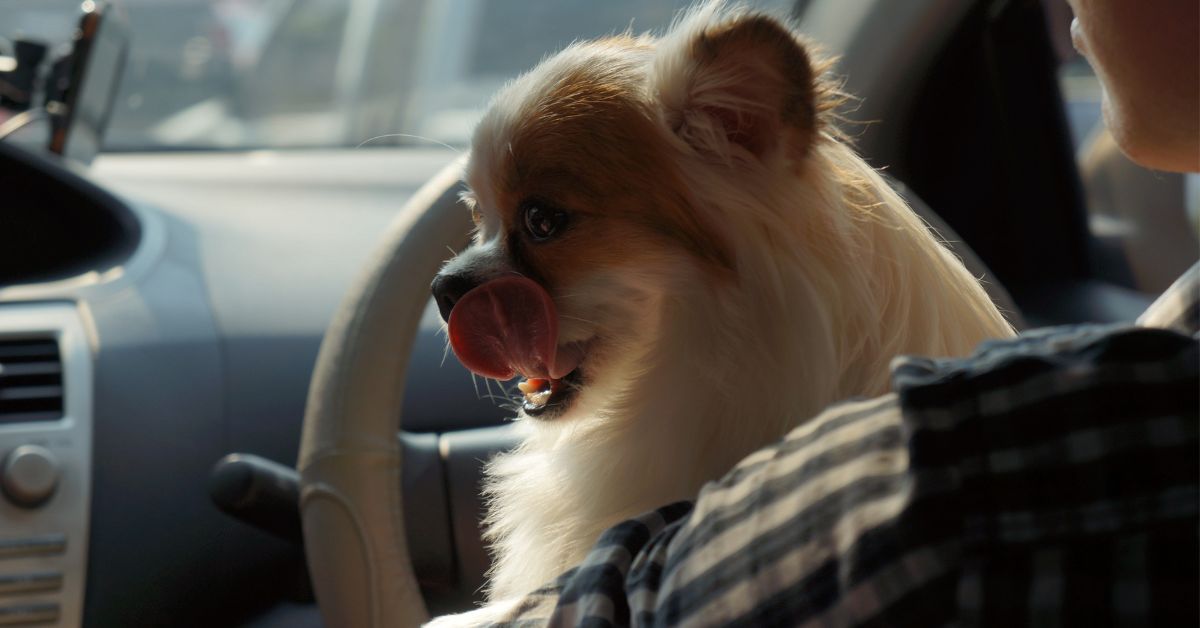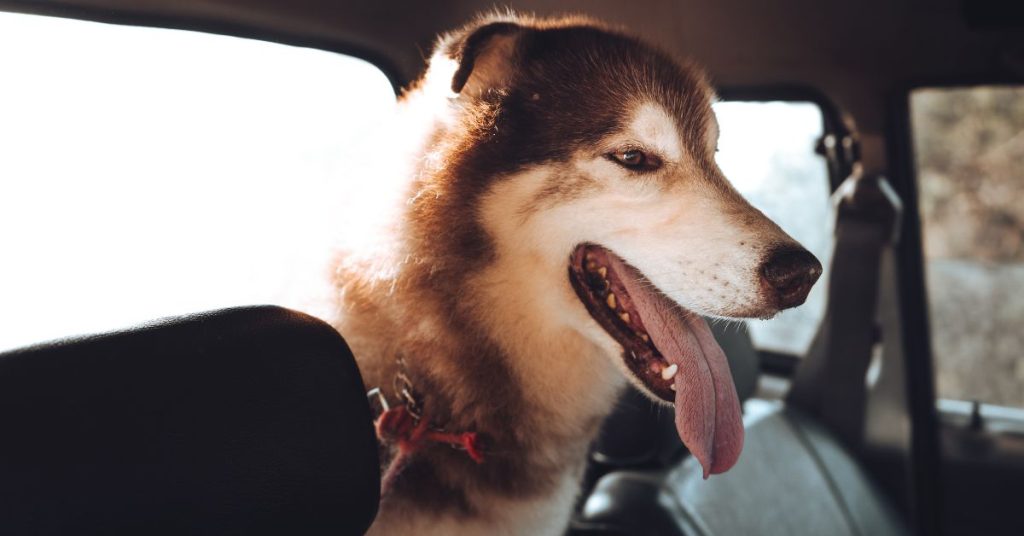When your dog barks constantly while riding in the car, it can become a stressful ordeal. Whether they’re barking due to anxiety, excitement, or territorial instinct, barking dogs can be huge distractions for drivers. So, it is crucial to understand the reasons behind your dog’s barking in order to handle the issue effectively. In this blog post, we’ll explore practical tips and training techniques for how to stop a dog barking in a car. Using positive reinforcement strategies and creating a calm environment can make car rides more pleasant for everybody.
Why Dogs Bark in the Car
If your dog barks in the car, you need to understand the underlying cause. Here are some common causes:
Anxiety or Fear
Many dogs experience anxiety or fear during car rides. Movements, sounds, or past negative experiences can cause this. Trembling, panting, excessive drooling, and barking are signs of anxiety.
Excitement
Some dogs bark out of sheer excitement. As a child, they associate car rides with fun activities such as visiting a park or going on an adventure. Usually, this kind of barking is high-pitched and accompanied by wagging tails.
Territorial Behavior
Dogs are territorial animals by nature. They may bark to protect their perceived territory when they see other people, animals, or objects outside the car. A more aggressive tone often characterizes this behavior.
Boredom
Boredom makes dogs noisy. If your dog is not mentally stimulated, it might bark out of frustration or seek attention. Playing interactive games or toys can help reduce boredom-induced barking.
Read More: Why Does My Dog Bark In The Car?
How to Stop Dog Barking in Car

The best way to address your dog’s barking in the car is to prepare, train, and create a comfortable environment for your dog. The following strategies will help you stop your dog barking in car rides:
Safeguard Them
You must ensure your dog’s safety and comfort in the car. You can restrain your dog with a crate or a dog seat belt. A crate gives your dog a cozy, enclosed space to rest in, which helps reduce anxiety. Dog seat belts or harnesses keep dogs safe and prevent sudden jolts or falls.
In both cases, you can create a sense of security so your dog won’t bark out of fear. Having a secure environment also reduces distractions for the driver, enhancing overall safety.
Provide High-Value Rewards
During car rides, reinforcing good behavior with high-value rewards is essential. Make sure you pack your dog’s favorite treats as positive reinforcement, especially ones they don’t get often. When your dog stays calm and quiet in the car, give them a treat and praise right away.
It helps them associate the car ride with positive experiences and encourages them to repeat it. In the car, high-value rewards are more motivating than regular treats, making it easier to capture and maintain your dog’s attention.
Make Use of Crates
Crates can provide your dog with a safe and secure space in the car, reducing barking and anxiety. Make sure the crate is the right size for your dog, and fasten it securely. Make the crate a comfortable and familiar environment for your dog at home.
Place treats or toys inside the crate to entice your dog to enter willingly. As soon as your dog associates the crate with positive experiences, use it in the car. The enclosed space can make your dog feel more secure and less likely to bark.
Keep Your Dog Busy
Keep your dog occupied during car rides to prevent boredom and barking. Invest in interactive toys, puzzle feeders, or chew toys for your dog to keep them mentally stimulated. Make sure you pick toys that won’t pose a safety hazard in the car. Rotate the toys regularly to maintain your dog’s interest.
Additionally, consider providing treats or frozen Kongs filled with peanut butter to keep them engaged. By giving your dog an enjoyable activity to focus on, you can make the car ride more pleasant for everyone.
Appoint an Assistant

Consider having someone accompany you on car rides to help you manage your dog. They can provide comfort, engage with your dog, and offer treats or toys to keep him busy. An extra pair of hands can also come in handy in case of any unexpected situations so you can focus on driving.
If a human assistant isn’t an option, you can also use interactive toys or automated treat dispensers in the car. If you and your dog have someone or something to assist, you and your dog can enjoy a car ride more.
FAQs
How can a dog stop screaming in the car?
The best way to stop your dog from screaming in the car is to identify the underlying cause, which could be anxiety, fear, or excitement. Gradually introduce your dog to car rides by starting with short trips and increasing the duration. Use positive reinforcement techniques, such as treats and praise, to reward calm behavior.
Provide a comfortable and secure car environment, like a crate or seatbelt harness. Use calming aids like pheromone sprays or music to calm you down. In case the behavior persists, consult a professional trainer or behaviorist.
Why does my dog go crazy in the car?
Various things can make your dog go crazy in the car, like anxiety, excitement, or sensory overload. Car anxiety can come from past bad experiences or being unfamiliar with them. Anticipation of fun activities or destinations can cause excitement. It can also trigger anxiety and excitement when there’s too much sensory overload outside the car.
Observing your dog’s behavior is crucial for identifying the specific cause. When you’re driving your dog, gradual desensitization, positive reinforcement, and a comfortable environment can help.
How do I train my dog to be quiet in the car?
You can train your dog to be quiet in the car by gradually exposing them to it and rewarding them. Start with short trips and reward calm behavior with treats and praise. Use a command like “quiet” paired with rewards when your dog remains silent. Distract them with toys or treats.
Practice regularly and gradually increase the duration of car rides as your dog gets more comfortable. You can teach your dog to remain quiet and relaxed during car rides with patience and positive reinforcement.
Final Words
If your dog barks in the car, you need patience, consistency, and understanding. Using the strategies outlined in this guide, including preparation, training, and creating a comfortable environment, you can help your furry companion enjoy car rides. If needed, seek professional help and identify the root cause of the barking. Both you and your pet can enjoy stress-free car journeys with time and effort.




